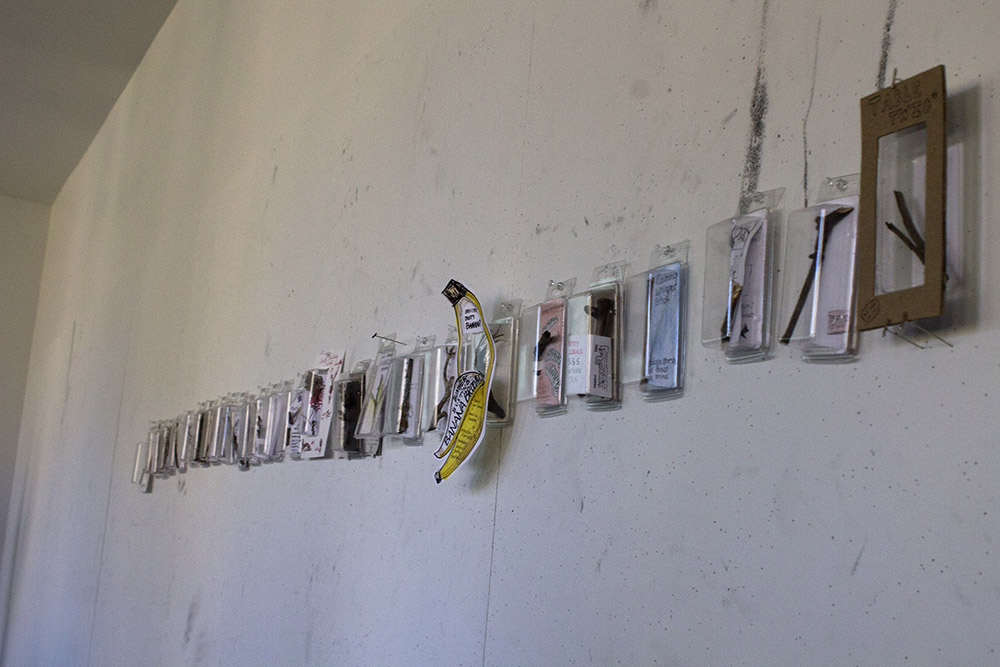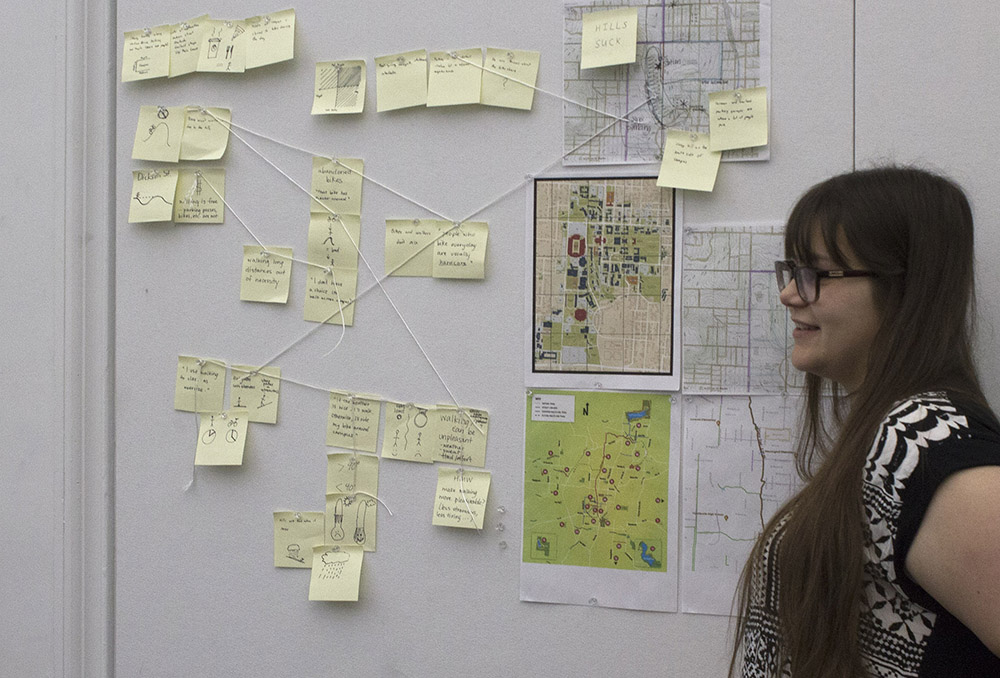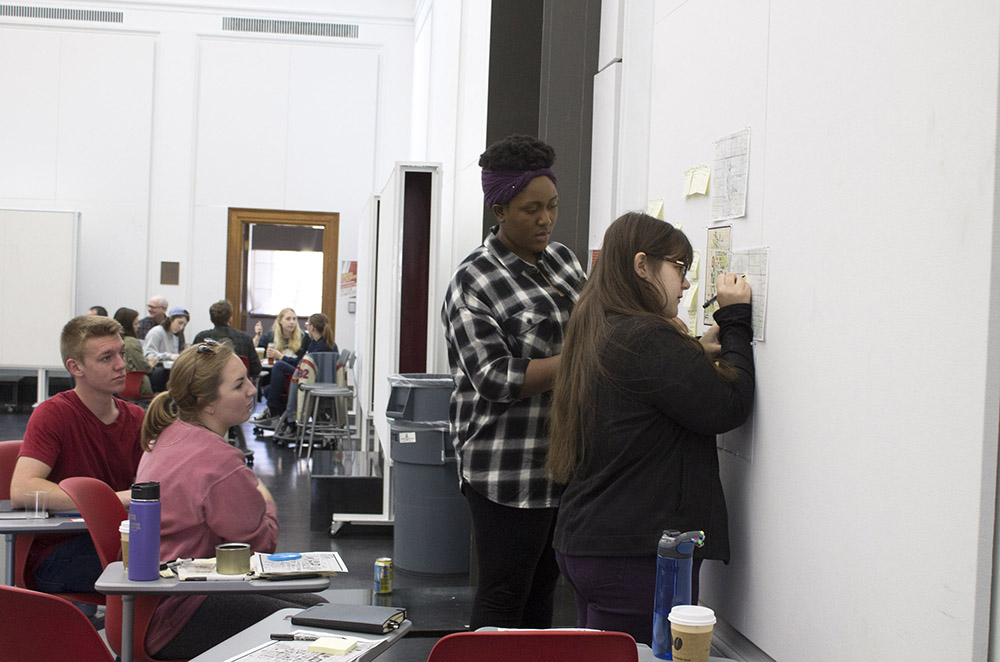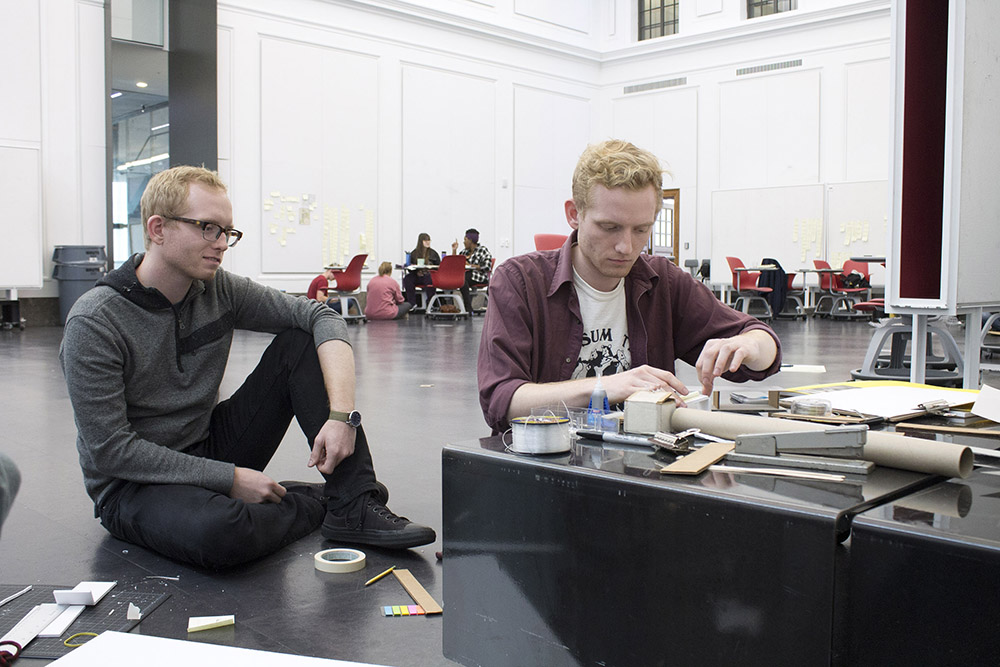
Honors students in the Design Fiction workshop created a variety of whimsical products made from twigs.
Imagine a situation. Think of a quirk or need that might exist. Design a product to address that need using the materials at hand – in this case, twigs gathered from Old Main lawn.
This is the basic framework for design thinking taught by Michael Hendrix, a partner at international design firm IDEO, during the two-day Design Thinking workshop for University of Arkansas honors students last fall.
Hendrix led students through a creative exercise similar to the ones his interdisciplinary team at the IDEO design studio in Cambridge, Massachusetts, engages in weekly.
Students fashioned the twigs they collected into an array of fanciful products, including ear bud clips, a navigational aid, a miniature modem and a dating service for squirrels.
“This might seem a little frivolous, weird and playful – but it’s really important, I assure you,” Hendrix told the 32 Honors College students who took part in Design Fiction, a half-day workshop open to all honors students. “This is about the mindset important for design thinking versus the methodology.”
Hendrix encouraged students to get out of their analytical minds and into the creative flow that comes from the subconscious. “Get active. Think with your hands. Think with your body. Iterate. Iterate. Iterate.”

Tamsan Mora works with a team to brainstorm ideas for human-powered forms of transportation on campus.
Hendrix also led Designing for People, an in-depth day-and-a-half session for honors students in the Fay Jones School of Architecture and Design. Students in this workshop tackled the challenge: How might the U of A campus be served exclusively by human-powered transportation?
Potential solutions included a network of above-ground tunnels dubbed Hamsterdam, a zip-line flight onto campus, an elevated bike trail and Woo Pup Sooie, a dog-walking service to encourage pedestrian traffic.
The University of Arkansas Honors College and the Fay Jones School Honors Program collaborated to host the Design Thinking workshops on Oct. 22-23. Hendrix also presented an Oct. 24 lecture, “Design and the Priesthood of Black Turtlenecks.”
Students share their responses:
“Designing a process versus a building has been interesting. Most of the time we’re working with a building in mind. … Embracing the quick, messy model (for making a prototype) turns out to be a good idea.” — Evan Hursley, fifth year, architecture.
“We talk about human-centered design a lot in our program. Understanding the process – how to kick-start creativity – is really helpful. So much of our coursework is about critique. It’s hard to just launch out there and be comfortable in creativity.” — Brianna Jenkins, senior, graphic design
“It’s a very different way of thinking than in my engineering classes. It’s good to stretch myself. I’ll use this in my group projects – start with the problem and work from there.” — Madison Crowl, senior, biological engineering
“One thing that’s different is the wild ideas! Our teachers push us to be more innovative, but to make that an integral part of brainstorming is different. It becomes a creative adventure without any kind of goal in mind. I’ve enjoyed the chance to loosen up. Michael’s done a really good job of walking us through this, but leaving enough ambiguity that we have to figure it out on our own. It’s a good way of learning.” — Erin Cox, third year, landscape architecture

Caleb Bertels and Erin Cox, seated, work with Anna Ibru and Tamsan Mora during a brainstorming session.
“This is really engaging. I’m actually having the chance to think. In most of my classes, I’m responding to a prompt. But this: Go find a twig, and imagine something. I didn’t know there were so many ideas I could come up with. I’ll use this process again to generate ideas.” — Anna Ibru, second year, architecture

